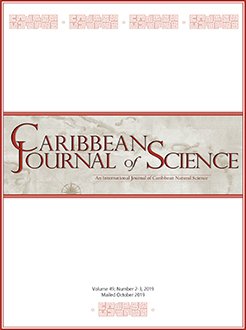Jobos Bay National Estuarine Research Reserve (JBNERR) has flora and fauna adapted to a tropical climate. Within the reserve lies the Aguirre Power Plant Complex, which produces a great deal of noise that could place significant stress on marine life and cover a significant area. To test this hypothesis, underwater sound frequencies were recorded at several points of different proximity to the power plant using a hand-held sound recorder with a hydrophone attachment. Each recording was two minutes in duration and positioned one meter above the ocean floor. Results revealed anthropogenic noise from the power plant is strongly present in the 0.01–200 Hz frequency range in an area up to 1.5 km from the power plant. However, because sound waves travel further in water than in air, this distance could be even greater. Acoustic frequencies from the power plant were not detected across a mangrove barrier located approximately 1.0 kilometers from the power plant. This implies that mangroves may have an unreported noise reduction function which, in this case, mitigates and completely blocks off acoustic frequencies from the power plant.
How to translate text using browser tools
11 April 2024
Effects of the Aguirre Power Plant on the Marine Soundscape: a New Mangrove Function in Jobos Bay National Estuarine Research Reserve, Puerto Rico: a Preliminary Study
Francisco Castro-Rivera,
Luis Colón-Dávila,
David Forestier-Montalvo,
Alejandro Ríos-Franceschi
ACCESS THE FULL ARTICLE

Caribbean Journal of Science
Vol. 54 • No. 1
May 2024
Vol. 54 • No. 1
May 2024




